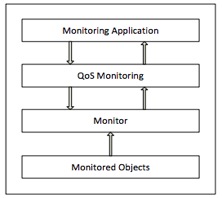Hello, Infinitricks Friends!

About QoS
Quality of Service (QoS) can also be referred to as the quality of service and is a measurement method used to determine the capability of a network, such as network applications, hosts, or routers, with the goal of providing better and planned network services to meet the needs of a service.
Quality of Service (QoS) is an end-to-end architecture and not just a feature of a network. The QoS of a network refers to the speed and reliability of delivering various types of data in communication.
Through QoS, a network administrator can prioritize specific traffic. QoS offers the ability to define service attributes qualitatively and quantitatively. The goal of QoS is to provide different qualities of service based on the service requirements within the network.
Corporate networks need to provide predictable and measurable services for applications (such as voice, video, and latency-sensitive data) to traverse the network. Organizations use Quality of Service to meet the traffic requirements of sensitive applications, such as real-time voice and video, and to prevent a decrease in quality caused by packet loss, delay, and jitter. Organizations can achieve QoS using specific tools and techniques, such as jitter buffers and traffic shaping. For many organizations, QoS is included in a service-level agreement (SLA) with the network service provider to guarantee a certain level of performance.
A Quality of Service Monitoring Model consists of monitoring application components, QoS monitoring, monitors, and monitored objects. Here’s an explanation of each component:
- Monitoring Application: This serves as a system interface for network administrators. It takes packet traffic information from the monitor, analyzes it, and sends the analysis results to the user. Based on this analysis, a network administrator can perform other operations.
- QoS Monitoring: This provides the mechanism for monitoring Quality of Services by gathering QoS parameter values from packet traffic data.
- Monitor: It collects and records packet traffic information, which is then sent to the monitoring application. The monitor measures packet flow in real-time and reports the results to the monitoring application.
- Monitored Objects: This includes information such as attributes and activities monitored within the network. In the context of QoS monitoring, this information refers to real-time monitored data flows. The type of data flow can be determined by the source and destination addresses at the IP layers, the ports used (e.g., UDP or TCP), and parameters within RTP packets.
QoS, which ensures the reliability of data transmission and reception, has several parameters:
- Throughput: This is the effective data transfer rate, measured in bps. Throughput is calculated by dividing the total successful packet arrivals observed at the destination during a specific time interval by the duration of that interval.
- Packet Loss: This parameter represents the total number of packets lost during data transmission due to collisions and congestion in the network.
- Delay: It is the time taken for a packet to travel from sender to receiver through the internet. Delay is composed of hardware latency, access delay, and transmission delay.
- Jitter: Jitter is the variation in end-to-end delay. UDP-based applications typically have high jitter levels, which are unacceptable for real-time applications like audio and video signals. In such cases, jitter can distort signals, which can be resolved by increasing buffer size.
So, Infinitricks Friends, do you understand Quality of Service in networking now? I hope this article is useful for both vocational school students and university students. See you in the next article! Goodbye!